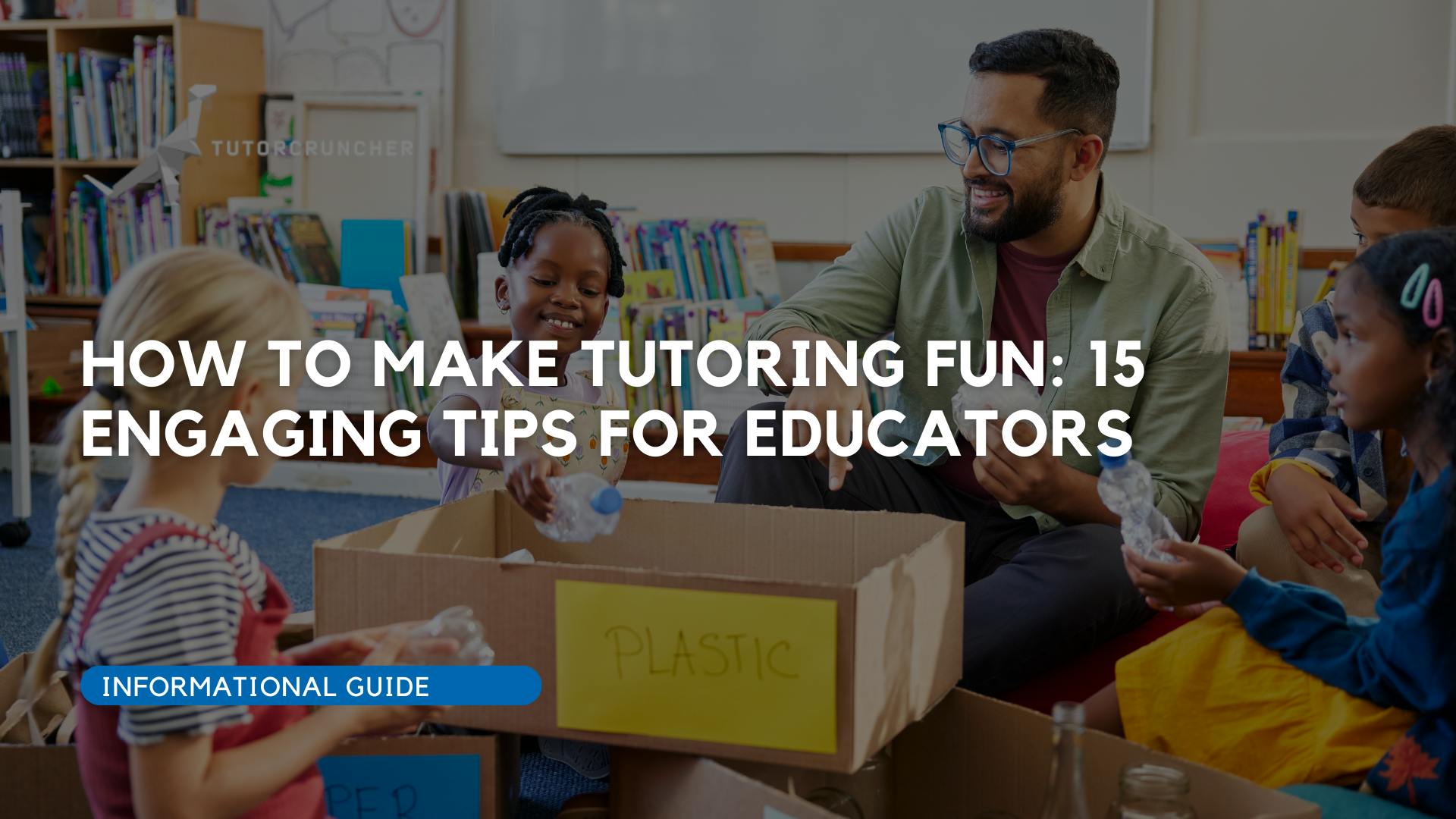Tutoring doesn’t have to be boring. Incorporating fun activities can greatly enhance a student’s learning process. Using games and quizzes during sessions can keep students engaged and make the experience enjoyable. Even students who usually dislike studying can find themselves more involved when learning feels like play.
Changing up the environment can also make a huge difference. Virtual backgrounds and outdoor lessons create a fresh atmosphere that sparks interest. With today’s technology, virtual backgrounds can transport students to different settings, making each session unique.
Additionally, including a warm-up session can ease students into the lesson. Starting with a simple activity helps break the ice and prepares them for more challenging tasks. By making tutoring fun, you ensure that students are more likely to look forward to their sessions and stay engaged throughout.
Establishing a Supportive Learning Environment
Creating a supportive learning environment is key for successful tutoring. It involves fostering engagement, tailoring to individual needs and building rapport with students.
1. Fostering Engagement and Comfort

Encourage students to interact with the material. Use games, quizzes and interactive activities to make lessons fun and engaging.
Visual aids like charts and videos can break up the routine and keep interest high. For online tutoring, you can use virtual backgrounds to make sessions more dynamic.
Open communication is crucial in creating a comfortable atmosphere where students feel safe to express themselves and ask questions. Regular five-minute breaks can also help maintain focus and comfort.
2. Tailoring to Individual Needs and Interests

Adapt your online lessons to fit each student's unique learning style, interests and age group. Find out what topics or activities excite them and incorporate those into your teaching.
This personalisation can boost their engagement and help them understand the material better. Assess their strengths and weaknesses regularly to adjust your approach.
Also, make use of free resources that align with their interests. This approach enables you to cater to their individual needs effectively.
3. Building Rapport and Trust with Students

Establishing trust is fundamental for a productive tutoring relationship. Begin with a warm-up session to get to know each other.
Show genuine interest in their well-being and progress. Regular feedback sessions can reinforce your support.
Be patient and positive, celebrate their successes, no matter how small and encourage them through challenges. This fosters a conducive learning environment where students are motivated and confident.
Incorporating Dynamic Activities and Technology
Making tutoring engaging for students involves using creative activities and technology. Using educational games, incorporating technology in online tutoring and adapting lessons with videos and pictures are three effective methods.
4. Utilising Educational Games and Puzzles

Educational games and puzzles can make learning enjoyable. Games like word searches and crossword puzzles can help students practise vocabulary. Maths games, such as Sudoku or Maths Bingo, encourage logical thinking and problem-solving skills.
You could also use board games to review concepts. For example, using a trivia game to test history knowledge. This approach keeps students engaged and helps reinforce material in a fun way.
5. Leveraging Technology in Online Tutoring

Technology can greatly enhance online tutoring sessions. Use interactive tools like online whiteboards for subjects such as maths and science.
These tools allow you to write and draw diagrams in real time, making it easier for students to follow along. Online platforms that offer educational games and quizzes can also be beneficial.
Platforms such as Kahoot and Quizlet are excellent for making lessons interactive. These tools can keep students engaged and make learning more interactive.
6. Adapting Lessons with Short Videos and Pictures

Short videos and pictures can break the monotony of traditional lessons and make concepts more accessible. Use educational videos from sources like YouTube or Khan Academy to visually explain complex topics. For instance, a video on the water cycle can make the concept clearer than a simple text explanation.
Pictures also play a vital role, especially for visual learners. Incorporate images, diagrams and infographics into your lessons. This helps students retain information better and makes lessons more interesting.
Strategies for Active Learning
Active learning engages students and makes tutoring more effective. Using various strategies like interactive quizzes, music, problem-solving and memory aids can enhance the learning environment. Here's how you can implement these techniques.
7. Facilitating Interactive Quizzes and Competitions

Interactive quizzes make learning fun. Use online tutoring software, apps or websites like Kahoot! to create multiple-choice questions.
These quizzes can cover material from lessons, helping students review and retain information. Competitions can be added to foster a sense of fun and challenge.
Divide the students into small teams and keep score to add a competitive edge. This approach keeps students engaged and motivated to learn.
8. Integrating Music and Movement for Memory Boost

Using music and physical activities can greatly aid memory. Incorporate background music during lessons or play specific music pieces related to the subject matter. For instance, classical music can improve concentration during study sessions.
Adding movements like jumping jacks or simple dances can help energise students. This combination not only makes tutoring sessions fun but also helps students to retain information better.
9. Encouraging Problem-Solving Skills

Fostering problem-solving skills is crucial. Present everyday-life scenarios and ask students to come up with solutions. This approach encourages critical thinking and application of knowledge.
Use puzzles, riddles or group tasks to make the process interactive. By engaging students with challenging problems, you help them develop thinking skills that are valuable beyond the tutoring sessions.
10. Using Mnemonics and Rhymes

Mnemonics and rhymes are effective tools for memorising information, especially for a young student. Create simple and catchy phrases or rhymes that students can easily recall.
For example, use the rhyme "In fourteen hundred ninety-two, Columbus sailed the ocean blue" to remember the date of Columbus's voyage.
Encourage students to come up with their own mnemonics. This method makes learning fun and helps students remember important details effortlessly.
Maximising Student Participation
To maximise student participation, focus on open communication, involve students actively in the teaching process and provide choices to foster autonomy. These strategies can lead to a more engaging and effective tutoring session.
11. Applying Open Communication Techniques

Encourage honest communication from the start. Create an environment where students feel comfortable expressing their thoughts without fear of being judged. Ask open-ended questions to spark dialogue and let students explain concepts in their own words.
Use active listening to show that you value their input. This also helps in understanding their needs and adjusting your teaching methods accordingly. Feedback should be both ways – let students share their views on your teaching style and offer constructive feedback on their performance.
12. Involving Students in the Teaching Process

Engage students by asking them to teach back what they've learned. During school lessons, students spend the majority of their time listening, so letting them be the teacher reinforces their understanding and confidence growth.
Interaction is key, so encourage discussions and debates on the topic at hand. This is a form of the flipped classroom approach, a popular online tutoring trend, and can be particularly useful in subjects like history or literature. For subjects needing practice, like maths, encourage students to solve problems on the board or share their solution methods aloud.
13. Providing Choices and Autonomy

Offering choices can make students feel more in control and motivated. Allow students to choose between different activities or problems to solve. This can be as simple as choosing which topic to cover first or selecting between types of exercises.
Give students some say in how the tutoring session is structured. For example, let them decide the timing of breaks or whether to incorporate games as a part of the learning process. This flexibility can make the session feel less rigid and more tailored to their preferences.
Reinforcement and Positive Feedback
Using a solid reward system and giving praise can make tutoring sessions more effective and enjoyable. These methods help keep the student engaged and keep them motivated.
14. Implementing an Effective Reward System

Rewards can be a powerful tool in tutoring. They encourage students by showing them the results of their hard work. You can use small rewards like stickers, extra free time or even a favourite activity.
Parents often appreciate seeing their child's progress, so keep them informed. This can also help if a child is struggling, as parents can offer additional support at home. Make sure the rewards are fair and motivate all students.
A well-planned reward system can be a game-changer. It helps students stay focused and feel excited about learning. Use rewards regularly to maintain interest and encourage continuous effort.
15. Offering Praise and Building Confidence

Praise is essential for building a student's confidence. When you recognise a student's efforts, it boosts their self-esteem. Simple phrases like "Great job!" or "You're getting better!" can make a big difference. It's important to be specific, so students know what they did well.
Confidence grows when students feel valued. Celebrating small successes keeps them motivated. Make sure to praise effort as well as results, so students understand that trying hard matters.
Consistently offering praise can lead to better academic performance. Students are more likely to stay engaged and willing to tackle difficult tasks. This positive atmosphere makes learning more enjoyable for everyone involved.
Find Out How TutorCruncher can Make Your Sessions More Fun
TutorCruncher provides many tools to make tutoring sessions more engaging and enjoyable for both the private tutor and the student. From our scheduling software, which easily manages future lessons to our comprehensive CRM, which helps keeping in touch with students easily, using our software makes tutoring online simpler.
Moreover, you can use TutorCruncher to provide feedback. This ensures open and honest communication. Students will now understand their strengths and areas for improvement, enabling growth in self-esteem and confidence.
If you want to find out more about how TutorCruncher can help your tutoring business, contact us at info@tutorcruncher.com or book a call with one of our sales reps.



